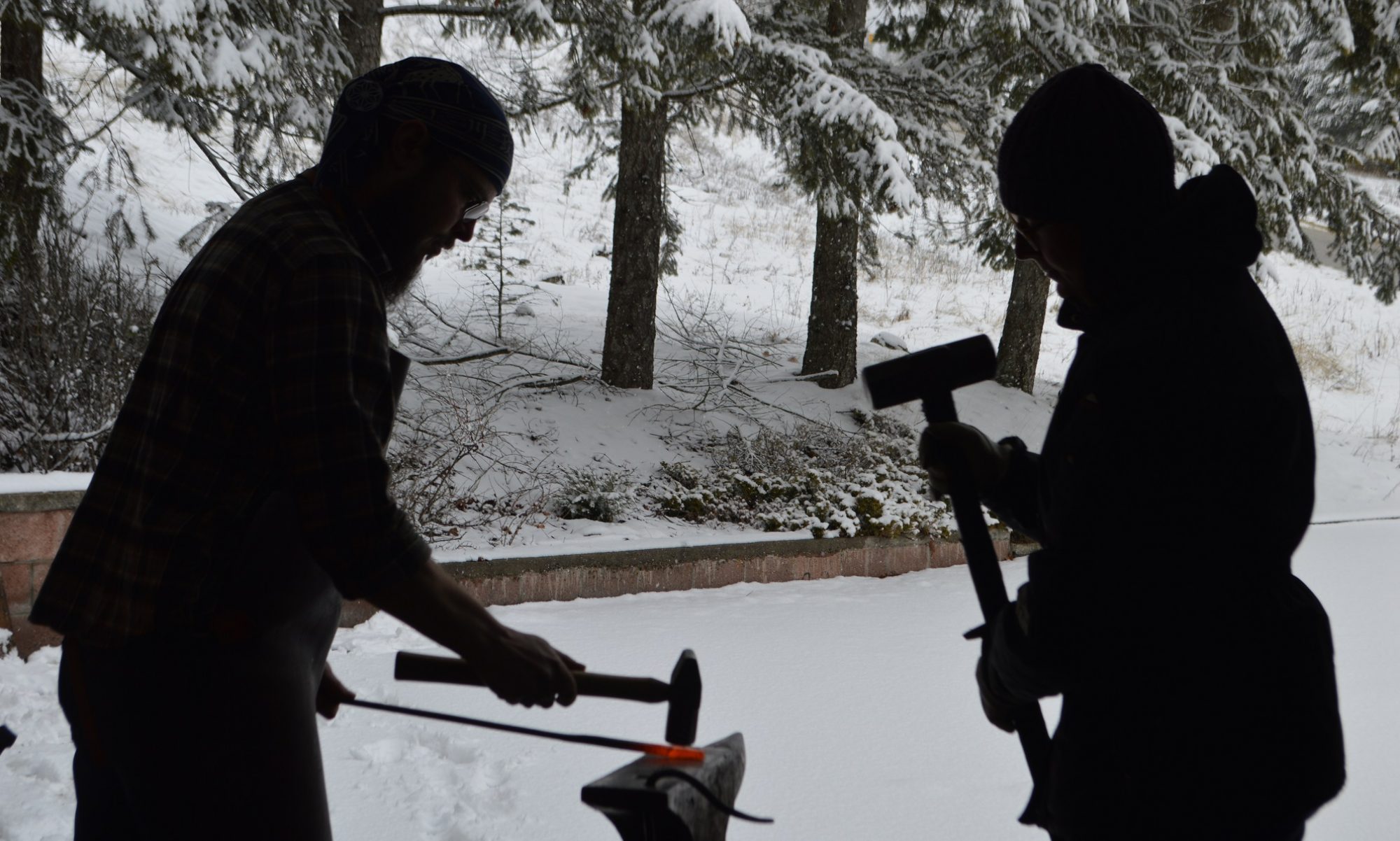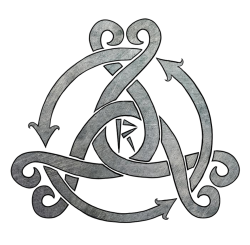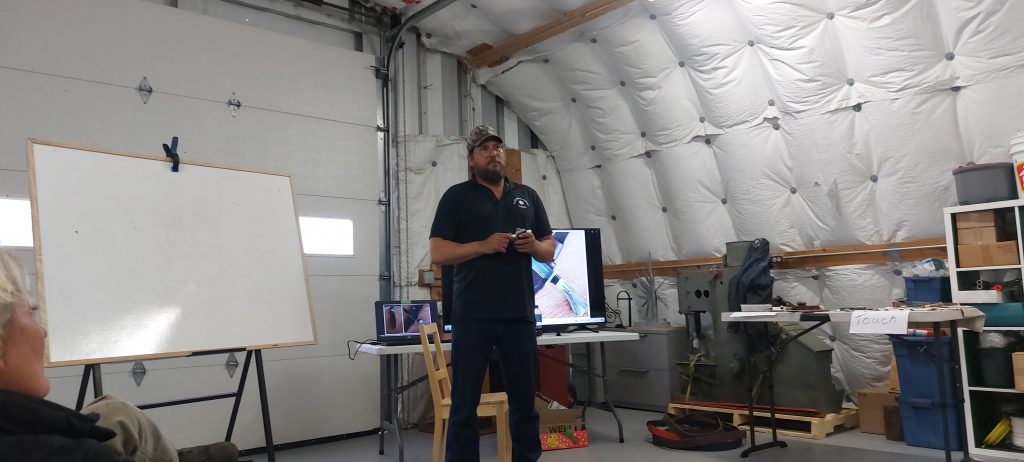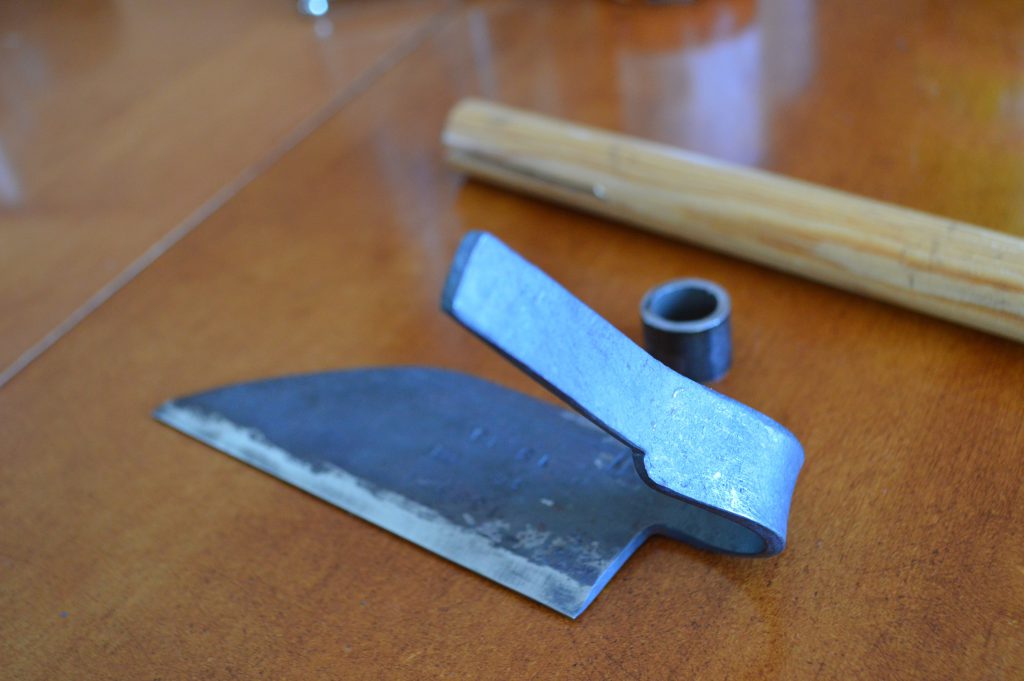This was a custom order we received from some folks in the US. They had a rough design in mind, and it was up to us to decide on the execution of it. It’s an interesting process where sketch means reality, working within the constraints of the material and the functional requirements of the project (in this case, it was a sign that could be hung up securely, was black in colour and would be resistant to the outdoor elements).
The final dimensions were roughly 36″ across and 24″ tall by 1″ deep. The finish is a matte black Rustoleum spray paint. The frame was constructed with hot rolled mild steel and assembled via welding.


The design was originally created at a much smaller scale to ensure our customer was satisfied with it. Once that was finalized, we printed it at a 1:1 scale on multiple pieces of 8.5″ x 11″ printer paper, and the whole design transferred to a piece of scrap plywood.

Starting to create the forged pieces and using the transferred design as a reference. This was a technique I learned in an ABANA course on making a grille. The cross was forged from 1/2″ square bar, upset at the ends.

More pieces are added. The printer paper was covered in blue chalk on the back and I used a ball point point to trace the lines, thus transferring the design onto the plywood. I didn’t have a piece of rusty sheet metal large enough for the project. Metal is preferable because I’d be able to place a hot piece of steel against the design to see if it needed tweaking. In this case, I had to cool the part enough so that it wouldn’t scorch the wood.

All the pieces are collected here, but not assembled. The penny scrolls on the sides of the frame were replace with a tapered scroll in the end.

The “crown of thorns” detail was a tricky bit of work. I wasn’t sure exactly how I was going to tackle transforming that bit of design into reality, until one night I suddenly thought of barbed wire. The wire was just the right scale for the project, so I took a length of it and wrapped it up around itself.



Here we can see as the project came along that the side scroll finials changed from penny to tapered. The customer preferred the look of these finials, and it was a quick enough job to change them. The top and side scrolls met at the corner and were welded together.




Ornamental ironwork is a very creative process and I enjoy the occasional project.
If you have an idea that you would like to see come to life, send us an email at info@reforgedironworks.com














